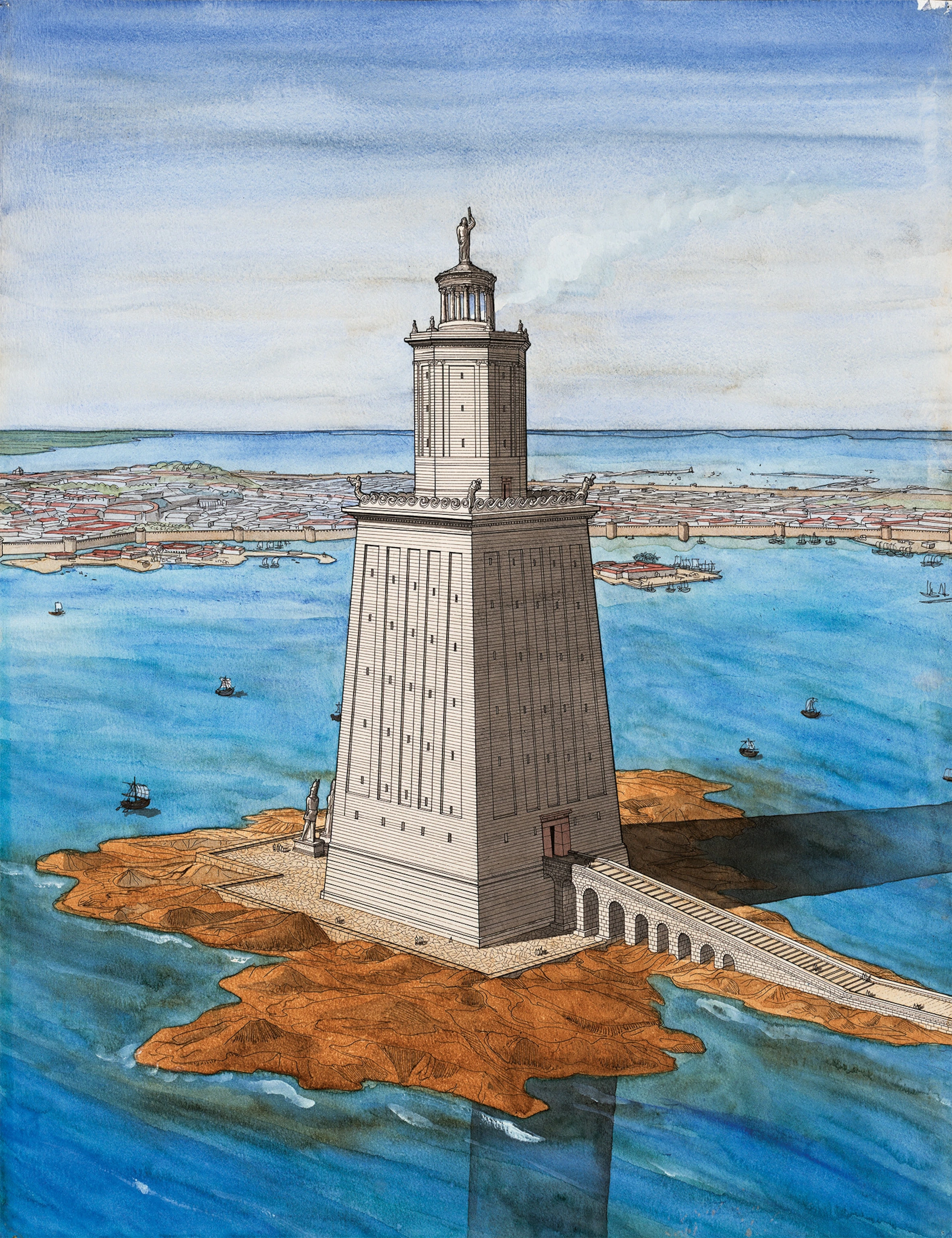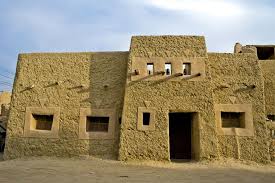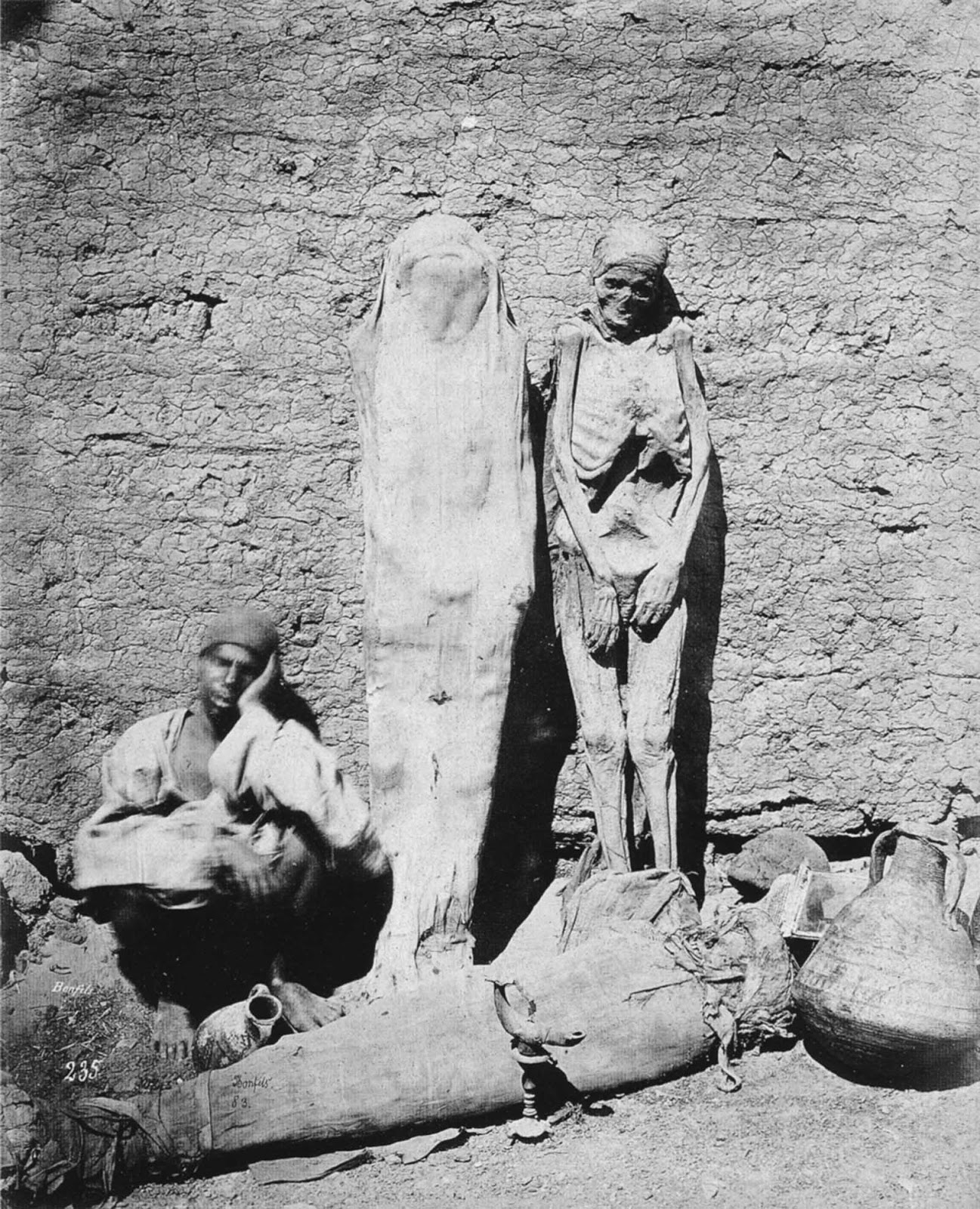
“It took 20 years to build the lighthouse of Alexandria at the Eastern Point of Pharos Island!”
The Lighthouse of Alexandria was built on the island of Pharos outside the harbor of Alexandria, Egypt c. 300 – 280 BCE, during the reigns of Ptolemy I and II. With a height of over 100 meters (330 ft).
Although now lost, the structure’s lasting legacy, after standing for over 1600 years, is that it gave its Greek name ‘Pharos’ to the architectural genre of any tower with a light designed to guide mariners. Perhaps influencing later Arab minaret architecture and certainly creating a whole host of copycat structures in harbours around the Mediterranean, the lighthouse was, after the pyramids of Giza, the tallest structure in the world built by human hands.
Alexandria in Egypt was founded by Alexander the Great in 331 BCE, and thanks to its two natural harbours on the Nile Delta, the city prospered as a trading port under the Ptolemaic dynasty (305-30 BCE) and throughout antiquity. A cosmopolitan city with citizens from all over the Greek world, the city had its own assembly and coinage and became a renowned center of learning. Soon after Alexander the Great founded the city, Alexandria became a very busy harbor and needed something to guide sailors into Alexandria port at night time.
Around 300 BCE Ptolemy I Soter (r. 323 – 282 BCE) commissioned the building of a massive lighthouse to guide ships into Alexandria and provide a permanent reminder of his power and greatness. The project was completed some 20 years later by his son and successor Ptolemy II (r. 285-246 BCE). The structure only added to the impressive list of things to see at the great city which included the tomb of Alexander, the Museum (an institution for scholars), the Serapeum temple, and the magnificent library.
It took 20 years to build this structure at the eastern point of Pharos Island in front of Alexandria harbor , but it was so well worth it: the lighthouse of Alexandria was one of the tallest man made structures on Earth! It was one of the Seven Wonders of the Ancient World!
The Lighthouse
Besides the Alexandria Library, the Lighthouse of Alexandria was definitely one of the most famous ancient Alexandria attractions.
According to several ancient sources, the lighthouse was the work of the architect Sostratus of Cnidus, but he may have been the project’s financial backer. The structure was located on the very tip of the limestone islet of Pharos facing the harbors of Alexandria. These two natural harbors were the Great Harbour and the whimsically named Eunostos or ‘Harbour of Fortunate Return’. The mainland was linked to the island of Pharos by a causeway, the Heptastadion, which measured around 1,2 km (0.75 miles).
The lighthouse, we are informed by a contemporary writer named Poseidippos, was intended to guide and protect sailors and to that end was dedicated to two gods, Zeus Soter (Deliverer) – whose dedicatory inscription on the tower was made with half-meter high letters – and possibly Proteus, the Greek sea god, also known as the ‘Old man of the Sea’.
The lighthouse at Alexandria was certainly not the first such aid to ancient mariners but it was probably the first monumental one. Thasos, the north Aegean island, for example, was known to have had a tower-lighthouse in the Archaic period, and beacons and landmarks were widely used by cities to help sailors across the Mediterranean.
Ancient lighthouses were built primarily as navigational aids for where a harbor was located rather than as a warning of hazardous shallows or submerged rocks, although, because of the dangerous waters of Alexandria’s harbor, the Pharos performed both functions.
The impressiveness and importance of the Pharos lighthouse are measured best by the fact that it became the etymological origin of the word “lighthouse” in Greek, French and Italian!
Its architect, Sostratos of Cnidus, proud of his work, wanted to have his name inscribed on the lighthouse, which Ptolemy II, the son of Ptolemy Soter, forbade him- it was his name that was supposed to be seen on this magnificent structure only!
Clever Sostrates got around this by chiselling his name onto the foundation of the lighthouse and covering it with plaster, underneath the consecration in honour of Ptolemy. Over time, the Ptolemy consecration fell off, and the plaster chipped off and revealed Sostrates’ inscription.
With its foundation made of stone and its building made of marble block masonry, the lighthouse of Alexandria’s height was estimated at between 393 and 450 ft (120-140m), which is equal to a 40-storey modern building.
It was connected to the mainland by a man-made connection, a giant causeway, named the Heptastadion. Alexandria lighthouse was structured on 3 levels: the lowest one shaped like a massive box, then the eight-sided tower and on top a cylinder which extended up to an open cupola where the fire that provided the light was burned.
On top there was also a mirror, which reflected the sunlight during the day and the fire at night. In Roman times, there was also a statue of Poseidon atop the tower.
The destruction of the lighthouse of Alexandria happened over many centuries. First, it got badly damaged in the earthquake of 956, then again in 1303 and finally in 1323 when it collapsed.
Today, no remains of the Pharos lighthouse can be seen except for the blocks discovered by divers on the floor of Alexandria’s Eastern harbor .
The lighthouse was intended to guide and protect sailors, and to that end was dedicated to Zeus Soter.
READ ALSO: 5 Mysterious Ancient Structures From Around The World





